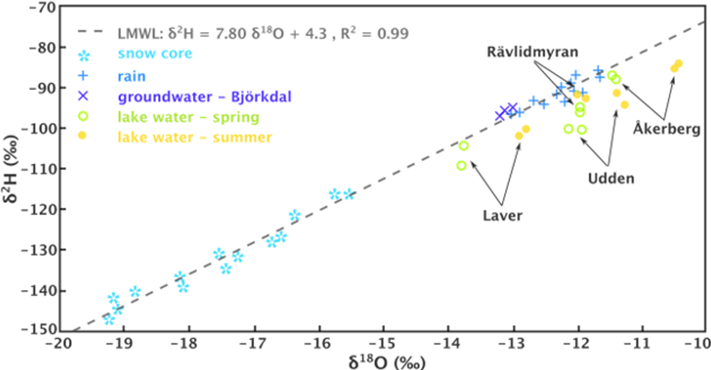7.9 Residence Time
Paulsson and Widerland (2020) investigated 4 pit lakes (waterbodies in abandoned open pit mines) in central Sweden, including measuring stable isotope compositions for snow, rain, groundwater and the pit lakes (Figure 43). Their study was complicated by the fact that the lakes are stratified, and that for 6 months of the year, the lake surface is frozen. Nonetheless, they applied the hydrocalculator (http://hydrocalculator.gskrzypek.com) method of Skrzypek and others (2015), which is based on the Craig-Gordon evaporation model (Craig and Gordon, 1965). The hydrocalculator uses measured, calculated and estimated values for the initial and final isotope compositions, relative humidity, temperature, as well as equilibrium and kinetic fractionation factors and enrichment and adjustment factors (Biggs et al., 2015; Dogramaci et al., 2015) to estimate the amount of evaporation that occurred from the lake surface, based on the change in δ2H and δ18O values. With adjustments for the lake stratification and the volume of water in each pit lake, they used the estimated evaporation value to calculate the residence time of water in each lake. The residence times varied from 3 to 14 years as the lakes are quite different in size and shape. These values can easily have a factor of 2 error, due to natural variability and complexity, and the assumptions in the models, but these results are useful to help quantify the broad differences between the hydrological systems of each pit lake.

Figure 43 – Stable isotope data for snow, rain, groundwater and pit lakes (named) in central Sweden. The distinct isotope compositions of rain and snow, and of each of the pit lakes allow calculation of residence time of water in the pit lakes (from Paulsson and Widerland, 2020). The large negative isotope compositions are due to the high latitude of the study area.
